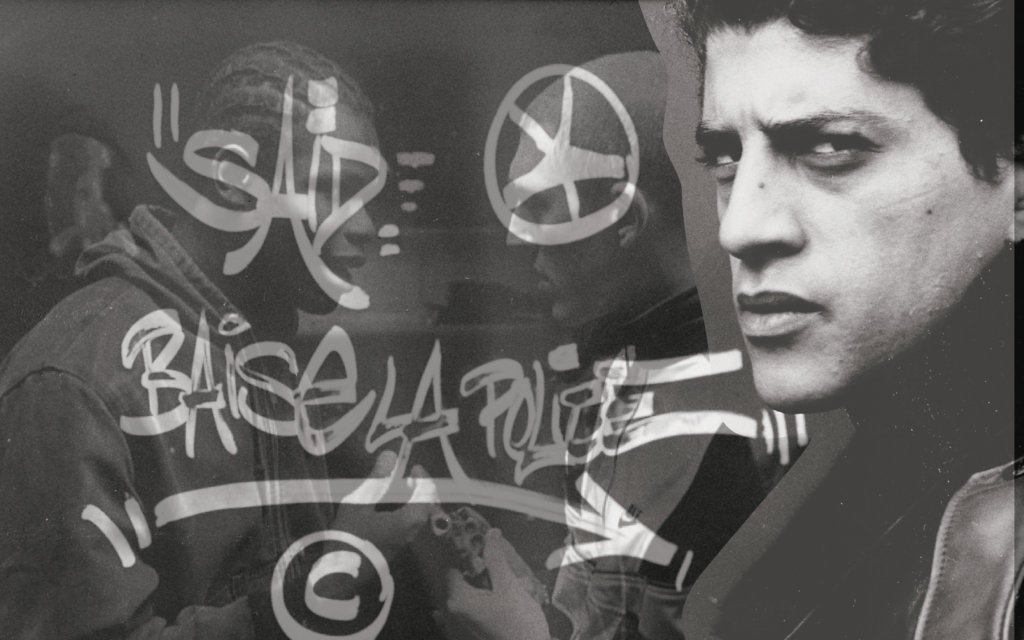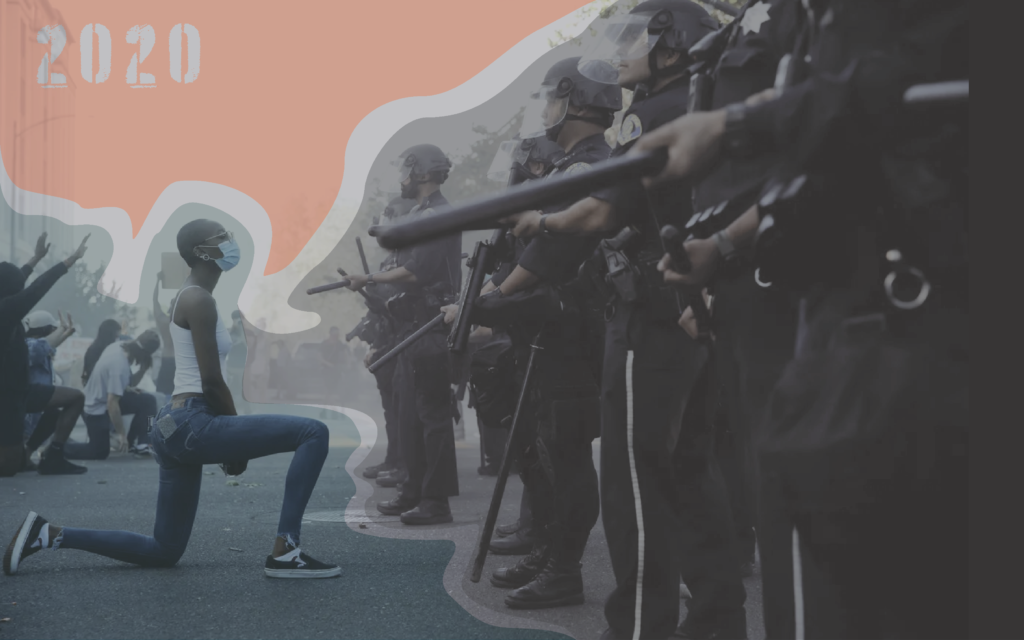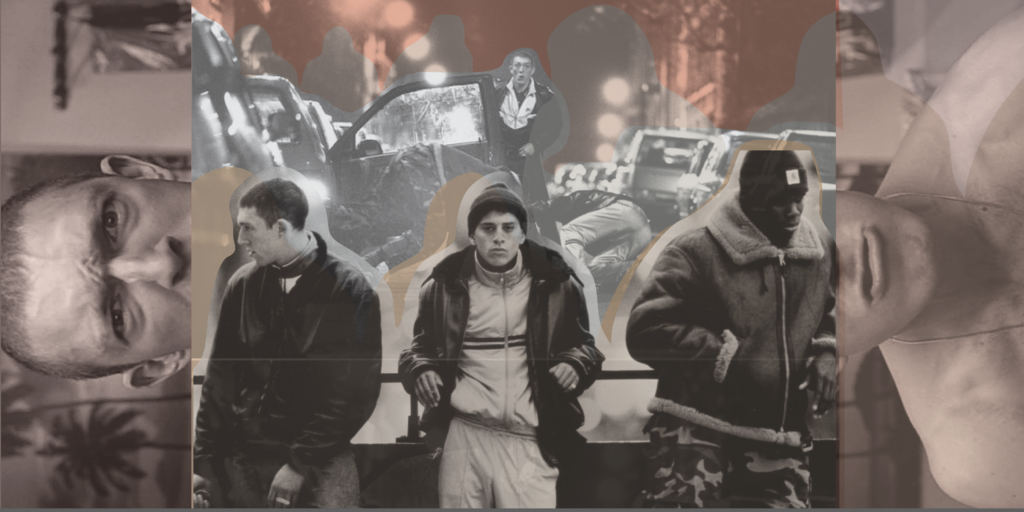There’s a grand tradition in French art of celebrating the poetic outlaw. Shocking the bourgeoisie with some avant-garde aesthetic is a badge of honor. You can read it in the 15th-century murder ballads of Francois Villon or in the tainted love between the “cursed poets” Verlaine and Rimbaud. You can behold it in all those gloriously bold and vivid brushstrokes of the Romantic painters or from the multicolored gallery of Les Fauves, aka “wild beasts.”
Cinematically, this subversive panache appears in films by Jean Vigo, Jean-Luc Godard, and Jean-Pierre Melville. But, crucially, all that aesthetic rebellion must be linked with political urgency — a desire to show the unwilling public the lives of those they would otherwise refuse to acknowledge, respect, or understand. As a legendary enclave of artists, Paris rightfully boasts of a proudly sophisticated and cosmopolitan style. Unfortunately, all that tres chic glamor sometimes overshadows the seething ethnic and economic tensions that crackle beneath the city of light.
La Haine (Hatred), the brilliant 1995 film from director Mathieu Kassovitz, plunges us right into the middle of that still-relevant social tension and soberly investigates how and why it happens. The opening shot is of contemporary news footage of rioters pushing against the police, while Bob Marley’s ominous “Burning and Looting” plays. Even though the footage comes from a mid-90s news report it wouldn’t be out of place in one of last summer’s protests, either in America or at various places across the world. This particular riot was in response to the official brutality routinely inflicted by the police on the multiethnic minorities who hail from the city outskirts in the area known as the banlieue.
France has always had trouble negotiating the various ethnic and class differences that have sparked riots and demonstrations for years. As I write, Prime Minister Macron expressed outrage — calling it “unacceptable” and “shameful” — after a videotape was released of Paris police beating a Black man named Michel Zecler. Islamophobia is an ongoing national controversy as well, which is part of the discourse around the Charlie Hebdo attack, the debate over banning the veil, and the avant-garde novels of Michelle Houellebecq. As some sociologists have explained, the social and cultural distance between ostensibly French people with very different backgrounds is ironic, since the official state policy is to declare that everyone living in the country should be considered French, wherever they happen to be from. Yet that egalitarian ideal ends up glossing over the alienation and condescension of those who feel they have no entry point into the larger society and are often harassed by police and lack prospects for the future.
For all its righteous anger at these social injustices, La Haine is a deeply humanistic film. It doesn’t just shake its fist at the powers that be. Instead, it clearly and sympathetically examines the complex human responses to the tragedy by following three young men as they respond to the violence inflicted on their community. A young Arabic friend of theirs was put in a coma by a policeman following a clash with the cops. There is a North African kid named Hubert (Hubert Koundé), an Arabic kid named Saïd Saïd (Taghmaoui), and a Jewish kid named Vinz, played by the ebullient Vincent Cassel in his breakout role. Each of them responds to the social chaos and anger in very different ways; Said and Hubert are certainly upset yet generally keep it \ together. Hotheaded Vinz loudly swears revenge, insisting that he won’t be next.

In the commentary, Kassovitz explains how he cut his teeth on American directors like Spielberg, Spike Lee, and especially Martin Scorsese. La Haine demonstrates how much he learned from studying their style and storytelling methods. This trio’s idea of cool is distinctly Americanized, from the WWF posters stuck on their bedroom walls to the old-school hip hop they listen to and the American movies they constantly quote. To his credit, Kassovitz (who later starred in Amelie) treats violence as anything but cheap sensationalism. It has ugly, real-life consequences and the film explores its social roots with a clear and sure focus on what causes that violence. The alienation these kids feel is clearly illustrated, highlighting one of the reasons why they have such an embittered response to the police. Even though they are ostensibly French, they have no connection to the world outside their small community.
Most of their day is spent aimlessly killing time, with nothing to do and nowhere to go, and their jittery energy has few real productive outlets. When they are forced to wander through Paris all night, it’s a completely foreign land. When the boys appear at an art show, they quickly make a farce of the elegant affair. When a sympathetic cop argues that there are plenty of good people on the force who will protect them from thugs, Hubert quietly but pointedly responds with words that resonate in our Black Lives Matter moment: “but who will protect us from you?”
La Haine is genuinely exciting to watch but its visual excitement doesn’t undermine its moral urgency. The camerawork is consistently brilliant; there is a superb use of zooms, extreme closeups, split screens, vertiginous slow spins, and a startlingly assured series of tracking, crane, and dolly shots. The dynamic editing creates the film’s frenetic mise en scene. After all, these characters are young and anxious and seemingly always on the run. The film is so nimbly edited that the viewer easily follows along with no matter how quickly the situation changes, which is often drastically and without warning. We see and feel their deep loyalty to one other. After all, they are pretty much all they’ve got.
Tensions ratchet up when it’s revealed that Vinz has surreptitiously boosted a policeman’s gun from the night before. In the director’s commentary Kassovitz explains that France has extensive gun control policies and so the presence of the eerily lit weapon isn’t reassuring, as it might be in an American film. When tempers are already inflamed because of state-backed violence, the last thing that’s needed is more heat. Nobody in this crew (apart from Vinz) feels safer with a gun. If anything, it’s the two people of color who automatically roll their eyes at Vinz’s flashing it around. Perhaps this is because they know perfectly well where such vigilantism will get you in the end. In one scene, they are tortured by two racist cops, as a rookie police recruit looks on, the matter-of-fact instruction on how to effectively abuse suspects twitching across his face.
At one point, there is one of the greatest synchronizations of music and visuals I’ve ever seen. As the main characters walk through a local courtyard, a few floors above them an anonymous black-clad teenage DJ stands at the window of his tiny bedroom with his turntables and two massive speakers pointing outwards. He takes a deep breath and starts spinning a mashup of KRS-One’s raucous 1993 single “Sound of Da Police” with Edith Piaf’s 1960 showstopper “Je Regrette Rein.” As KRS-One and Piaf trade lines, the camera rises and then floats majestically over the buildings and trees, which moves me every time I see it. This mashup brilliantly connects the realities of African- American street life with a poignant nod to one of the feisty grand dames of French popular music. It’s a powerful suggestion that the desire for justice really can cross over the otherwise forbidding borders of history, culture, genre, and geography.
There is also a wonderful scene where an older gentleman, who happens to have crossed paths with the boys while they fiercely debate over Vinz’s lust for revenge in a public bathroom, spontaneously launches into a shaggy dog story about his time in the war which ended very badly for a friend of his. The story is amusingly earthy and contains a subtly profound moral insight. As The Onion A.V. Club’s Mike D’Angelo explained:
It’s not clear whether the old man overheard the boys’ conversation about whether violence against the police is justified if their buddy dies, and if so, whether he intended this anecdote as commentary or rebuttal . . . But even if not, one doesn’t have to work too hard to ferret out the thematic significance of some poor schmuck who perishes because he allows himself to get needled into doing something stupid.
To this end, La Haine delivers an extremely clear and powerful message in unmistakable terms: even in a world gone horribly wrong, violence is not the answer. It is made clear that there are empathetic characters on each side of the social divide. Vincent is very charismatic, but it’s obvious that he also has a huge chip on his shoulder. And when he’s finally tested after a confrontation with some neo-Nazis on the street, it ends in a way no one wants. Even though La Haine vividly demonstrates the dangers of institutionalized violence, it doesn’t valorize vengeance as a response. La Haine’s moral center runs deeper than that. In one small but telling moment, Said casually defaces a billboard boasting the arrogant slogan “The World Is Yours” (a Scarface reference which has been endlessly quoted since, often without irony, in many hip-hop songs) and makes it read “The World Is Ours.” Sometimes, all you have to do is change one letter.
Considering how easy and convenient it is to ignore how race, economics, media hype and nationalism can snowball over time and become an avalanche, the insights of La Haine are urgently needed at this anguished moment. As the ever-sensible Hubert points out, “hatred breeds hatred.” La Haine was an unexpected hit when it came out, won a coveted award at Cannes, and sparked heated discussions across the country, including a public dialogue between Kassovitz and then Prime Minister Nicholas Sarkozy. 25 years after La Haine first made its incendiary debut, it’s a little depressing to see how relevant it still is.

Watching it today might shed some painful but necessary light on some of the problems America faces and pose some painful but necessary questions about whose lives matter and why. •




